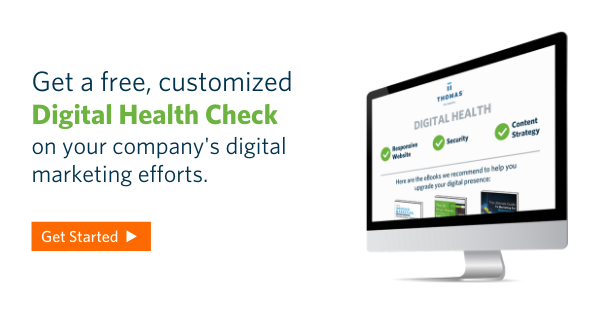
[ad_1]
The current business climate is driving manufacturing companies to build a more digital and data-driven workforce. As the industry adopts more technologies and influences the future of American manufacturing, what challenges are they continuing to face and how can they guide their organizations strategically?
Adoption Of Automation For Processes And On Plant Floors
Industry 4.0 is what is referred to as the Internet of Things, or IoT, and during the past couple of years it has introduced a new era of technologies to transform the way industry operates, like the adoption of robots.
For the meat manufacturing industry, adoption of automation has been comparatively slow, but largely because it has proven difficult to develop robots that can effectively and accurately perform the work of human workers. In addition, there has been a controversial history of robots in industrial facilities (the first robots in facilities were caged to prevent injuries). And in recent years, several automation initiatives within meatpacking companies have been abandoned due to increased wastage of high-value meat. But the COVID-19 pandemic has catalyzed meat manufacturers and other industries to move toward the direction of adoption and integration.
According to a recent industrial survey, more than half of the companies surveyed reported that they meet or exceed the industry standard for automation, with 55% of the participants being “likely” to “very likely” to invest in Production Performance Automation in the next 12 months. It’s no secret that automation and other technologies are worth it in almost every manufacturing facility type, but companies must remain proactive.

According to a report from MHI in conjunction with Deloitte, skilled individuals are hesitant to work for companies that haven’t fully adopted digital technologies. To bridge the digital and IT skills gap and fill advanced roles, consider reverse mentoring, promoting technology goals and utilizing upskilling and reskilling. Most companies are familiar with traditional mentoring programs that involve an older generation worker who shares professional or personal experiences with a younger employee. But in reverse mentoring, a younger employee educates the more experienced colleagues on digital skills and how to use certain technologies, including online marketing efforts.
Calculating ROI can be difficult if you’re new to digital ads or inbound marketing. Begin by setting analytic tools like Google Analytics and Thomas WebTrax and record your current efforts in reports. Take a look at current industry benchmarks to track how well your efforts are faring and what opportunities you can improve on. Not all leads are the same and proper digital reporting and analytics in place will help to solve the challenges of managing leads and generating engagement from engineers, procurement managers, and MRO professionals.
Using Data To Improve Decision-Making
Most businesses have access to the same set of data sources, like website analytics or app monitoring, to make decisions. Other traditional data can be collected in-house through metadata from emails, memos, and contracts to provide insight into communication trends and industry benchmarks.
When supplemented with traditional data, alternative data gives a unique insight to make more accurate predictions. A typical function of alternative data is using it to identify efficiencies in processes and ways to improve net returns. And while alternative data has steadily become mainstream in finance industries, other sectors are reaping the benefits too and adopting data-driven growth strategies. Because of its impact on the economy as a whole, data around manufacturing has been of particular interest to decision-makers who seek to develop a better understanding of predictions and what opportunities are available.
In a recent Thomas podcast, guests Mark Heidebrecht and Sam Bradbury, the two board-certified ergonomists advised to use data to propel your business forward. “There is a lot of data out there. I would caution this by saying there is a lot of bad data out there as well. But if you can find a good data source that gives you good, reliable information to make your decisions, you want to go with a data-driven process that allows you to make good decisions that support the outcomes you’re trying to achieve,” Mark Heidebrecht said.
Today, more manufacturers are using data and automation to improve safety. But some manufacturers may be challenged with how to convert their data into actionable items. Invest in tools that can tell you exactly how much risk you’re taking on by bringing technologies into your facilities.
The Thomas Manufacturing Index (TMX) sheds light on key dynamics that drive market performance by measuring industrial activity in the United States and Canada from a diverse set of companies, including Fortune 1000, mid-market, and SMBs. Click here to see that data and learn how you can interpret the data to sharpen your strategies.
You may also be interested in:
Managing Cybersecurity
Due to the in-person limitations of COVID-19, 84% of recently surveyed manufacturers are using their website more to generate new customers — in contrast to 72% before the pandemic. With the increasing use of technological advancements, manufacturing leaders should be aware that their industry is one of the most targeted by cyber attackers. According to EEF (formerly the Engineering Employers’ Federation), over 45% of the manufacturers have been subjected to a cybersecurity incident.
Videos and online chats are more prominently being used now in a time where face-to-face meetings are restricted, and you’ll want to make sure your employees are using secure internet connections to protect your business and your customers. At a minimum, manufacturers should have a secure website. Buyers, procurement professionals, engineers, and other purchase decision-makers expect a seamless, secure experience when sourcing suppliers and products online.
You may also be interested in:
How The Manufacturing Industry Can Overcome Technology Challenges
To outperform competitors in today’s highly connected, digital world, it’s important to actively engage incoming and existing workers on ways to stay relevant, efficient, and aware of what’s changing in the IT world.
Thomas has resources and expertise to help you overcome those challenges and ensure you’re technology-driven not just for the short term, but sustainably for years to come. Request a free digital health check to see exactly how you can improve your digital efforts.
See more related articles:
Dive into industry-focused articles:
[ad_2]
Source link

